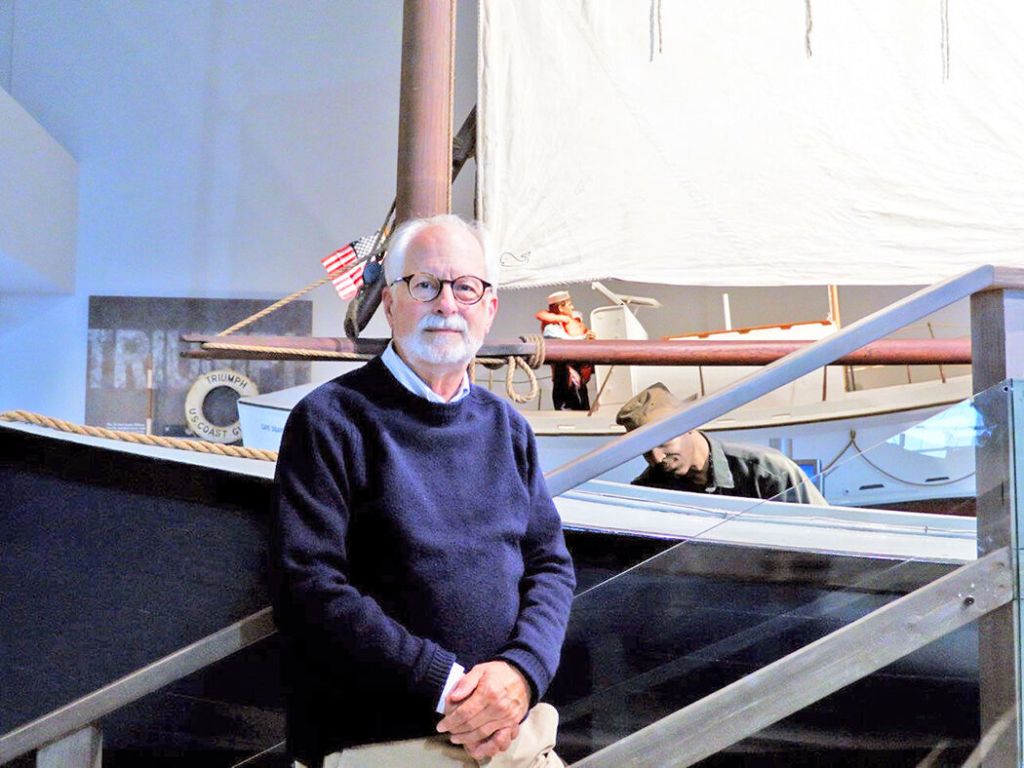Editor’s notebook: Johnson was right man in right time, right place
Published 9:46 am Sunday, December 31, 2023

- Sam Johnson is retiring as executive director of the Columbia River Maritime Museum.
Great museums begin as a collector’s obsession. For instance, the National Gallery of Art grew from the private collection of Paul Mellon. The Columbia River Maritime Museum began as the obsession and private collection of Rolf Klep. Born in Astoria, Klep was a nationally recognized illustrator and a seafaring man. His collection of maritime artifacts made their first public appearance in the Clatsop County Historical Society. Walking through Klep’s mélange of telescopes, compasses, ship’s wheels and other maritime objects was like stumbling into someone’s attic.
Thanks to Klep’s legendary persistence as a fundraiser, his collection became the building at 1792 Marine Drive. In the years since the museum was started in 1962, it has had five directors, beginning with Klep himself. At the end of December, the fifth director Sam Johnson will retire amid gratitude and acclaim.
If you encountered Johnson slipping coffee in an Astoria restaurant you might mistake him for a college professor, rather than the wooden boat builder he is or the prodigious fund-raiser that he has been. As the museum’s executive director, Johnson charted new pathways, finding new donors and expanding on the gifts of prior donors. Under Johnson’s watch, restoration of the Astoria Railway Station was completed — now known as the Barbey Maritime Center. A number of collections were enlarged or refined.
‘Discipline and energy’
Through it all, Johnson’s imagination took the museum in new directions. He recognized a large hole in the museum’s programming — the indigenous people who inhabited the lower Columbia for thousands years prior to its naming by American sea captain Robert Gray. The resulting Cedar and Sea presentation is certain to generate excitement when it opens, most likely in the fall of 2024, by telling long-neglected stories about coastal civilizations.
“We have about 240 items in the Cedar and Sea exhibit, almost all of which had to be gathered by me or be made for the exhibit — it’s a huge amount. We now have all the materials on hand — some beautiful, beautiful things made by Indigenous people,” Johnson said in a wide-ranging conversation last month.
He cites “discipline and energy” as the traits he’s brought to the museum, among the most visited attractions on the Oregon coast. These words could be the personal motto of a man who raised some $42 million for capital projects in his 15 years at the helm, plus another $30 million in operational funding. With around 2,000 loyal members, Johnson foresees a future emphasis on membership and visitor services — careful deference that could generate additional financial support for the museum’s key functions of preserving maritime artifacts and stories.
An enthusiastic vision
Expansive as the museum already is — and set to soon add a new facility devoted to displaying prime examples of local boats — Johnson has an enthusiastic vision of much more to do.
“There are a multitude of subjects out there that we have not yet even scratched the surface on and they’re really interesting things,” he said. With an academic background in marine biology, he’s especially excited by ideas centered on our area’s rich environment. One forward-thinking concept is for the museum to expand into helping visitors understand the Columbia River itself — how it shaped the past and continues to influence our lives.
“When I was first hired, I told the board this river we’re looking out at is the single largest estuary in the United States that still does not have its own interpretive center. I pointed out and challenged the board in my very first meeting with them that I think the only way we’re ever going to see this happen is if this museum gets it done,” he said.
Little known to most of us, the Columbia and greater Pacific Northwest attracted adventurous and brilliant early scientists whose work the museum could spotlight. “Their work is incredible,” Johnson said of these “naturalists at sea.”
If You Go
The Columbia River Maritime Museum is well worth hours of anyone’s time.
Website: www.crmm.org
Address: 1792 Marine Dr, Astoria
Hours: 9:30 a.m. to 5 p.m.
Phone: 503-325-2323
Admission: Adults (18+): $16, Seniors (65+): $13
Children (6-17): $5, Kids 5 & under: Free
Active Duty Military: Free
Closer to the institution’s current emphasis, he’d love to see a focused effort on collecting and preserving more of the Astoria area’s extensive World War II-era connections to the U.S. Navy and military shipbuilding. It was a bustling and rough-edged place, with thousands employed at the Kaiser Shipyard, AMCCO and other facilities, manufacturing Liberty ships, “baby flattops,” minesweepers and other vessels.
The Cold War saw “stealth boats” built on the Columbia River. “They would roar up and down the river and you’d go ‘What the hell is that?’ They’re a boat that can go extremely fast, they’re armored, and they’re ‘stealth’ for working in shallow waters like in the Mediterranean and off the Middle East. Big time, big time production, right here in our own backyard,” Johnson said. Now is the time to capture these stories, he urged.
More to come
Nearing age 80, Johnson’s plans remain ambitious — though he says he’s done with teaching the physically demanding craft of casting bronze nails and other corrosion-resistant boat parts. Thanks to a retirement present from the museum’s directors, next summer he’ll attend two courses in Monterrey, California, dedicated to the still-relevant art of drawing scientific illustrations. Beyond being aesthetically fascinating, such handcrafted art can convey information more effectively than photos.
At the suggestion of his staff, he also plans a series of annual lectures on maritime subjects, perhaps leading off on the subject of ship’s boats, the hardy little craft used to travel ship-to-ship and ship-to-shore. He’s intrigued by the story of Capt. William Bligh’s arduous voyage in such a boat after being set adrift by the Bounty’s mutineers.
“Everybody thinks because of Bligh’s activity with that boat that they’re all really seaworthy, but no, it was just incredible seamanship by the people who handled those boats,” he said. “The ability to read the sea, know what the currents and waves and all the conflicting movements of water are so they don’t let your boat get swamped or whatever, and it’s also how to handle the equipment on a boat — the oars and all the other ancillary equipment.”
Despite how history remembers him, Bligh wasn’t a complete villain. In getting himself and the non-mutineers to safety, he demonstrated real grit.
“The leadership — it wasn’t all hard-nosed — the people would have killed him,” Johnson observed. Maybe the same can be said of the kindhearted and scholarly Johnson himself as he retires.









